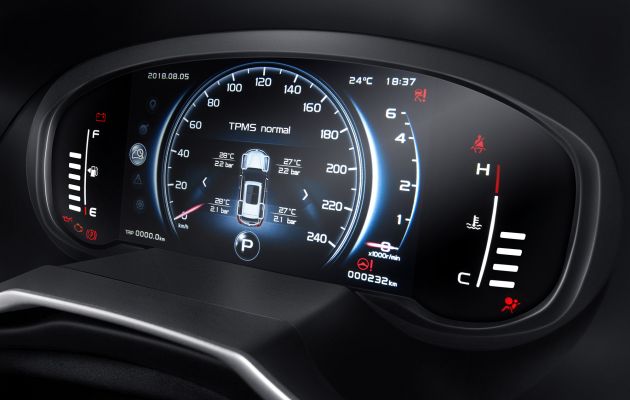Proton has released a bevy of new information about its upcoming X70 following a second media preview that was held today. In this post, we’ll be focusing on the SUV’s powertrain as well as aspects of its ride and handling.
First, a recap. The X70 comes in four different variants – Standard 2WD, Executive 2WD, Executive AWD and Premium 2WD. All of them are powered by a 1.8 litre four-cylinder TGDi petrol engine that outputs 181 hp at 5,500 rpm and 285 Nm of torque from 1,700 to 4,400 rpm.
The mill is mated to a six-speed automatic transmission, which is sourced from Melbourne-based DSI (Drivetrain Systems International) – a wholly owned subsidiary of Geely since 2009, with drive going to the front wheels on 2WD models. Meanwhile, the sole AWD variant gets an all-wheel drive system developed by BorgWarner, which is totally front-biased (100:0) by default. When needed, the system is capable of automatically sending 30% of torque to the rear axle (70:30 front and rear split) using a NexTrac electromagnetic multi-clutch coupling.
Proton claims a 0-100 km/h time of 10.5 seconds, while fuel consumption for 2WD models is rated at 7.8 l/100 km or 12.8 km/l – no figures for the AWD model as of yet.
Drivers will get to choose from three different drive modes for the powertrain (no active dampers) – Normal, Eco and Sport – and you can tell which one is in effect by referring to a ring in the instrument cluster. In Normal mode, the ring will be in white, Eco is green and Sport is red – the last one also sees changes to the digital tachometer.
To ensure comfort and low NVH levels, the X70’s ride and handling was tuned by MIRA UK, a company that has been around for more than seven decades and specialises in vehicle development, although Proton didn’t state how much input it had in this aspect. The X70 boasts a rigid front subframe as well as rear multi-link suspension (MacPherson struts are used at the front). The national carmaker also notes 2WD models weigh 1.7 tonnes but didn’t reveal the same for the AWD model – sources point towards an extra 100 kg.
Source: Read Full Article


